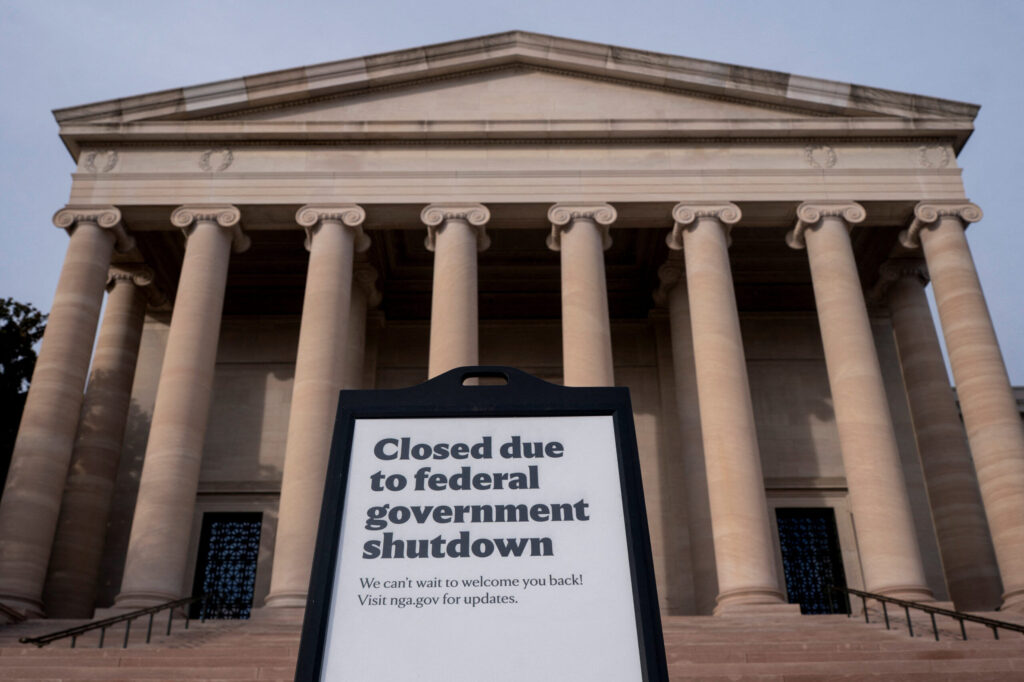States trash troves of masks and pandemic gear as huge, costly stockpiles linger and expire
As the COVID-19 pandemic seized an unprepared health care system in the U.S., many states scrambled for limited supplies of face masks and other protective gear.
Fast-forward three years to when the pandemic loosened its grip and states are struggling to deal with a glut of surplus protective gear and are ditching their supplies in droves.
It appears Colorado avoided that conundrum by proactively giving away supplies, though it’s not immediately clear how those entities that got them dealt with expiration dates.
Last year, Colorado lawmakers passed a law that requires the Division of Homeland Security and Emergency Management within the Department of Public Safety to maintain – in a declared disaster emergency – a stockpile of these essential supplies and to donate or sell any excesses to avoid storing provisions past expiration dates.
The law also authorizes the State Board of Health to adopt rules that ensure health facilities maintain an adequate stockpile of protective gear for infection control.
Hospitals and long-term care facilities, such as nursing homes, are required to maintain their own reserves.
Colorado maintains a 60-day supply of personal protective equipment and other critical supplies in warehouses for state and local public health agencies, Kristen Petitt Stewart, spokesperson for the Colorado Department of Public Health and Environment, said in an email to The Denver Gazette.
Since April 2022, the state warehouse has donated:
? 368,000 medical gowns
? 67,000 face shields and bottles of hand sanitizer
? 101,000 packages of sanitizing wipes
? 54,000 surgical masks
? 75,000 N or KN95 masks
“Donations were made to health care providers, long-term care facilities, various nonprofit organizations, schools, dental offices, local public health agencies, and veterinary clinics,” Stewart said.
Inadequate supplies compelled Ohio officials to buy millions of medical gowns from a marketing and printing company and spent about $20 million to try to get personal protective equipment made in-state.
Three years later, Ohio and other states are now trying to deal with an excess of protective gear, ditching their supplies in droves.
With expiration dates passing and few requests to tap into the stockpile, Ohio auctioned off 393,000 gowns for just $2,451 and ended up throwing away another 7.2 million, along with expired masks, gloves and other materials. The now expiring supplies had cost about $29 million in federal money.
A similar reckoning is happening around the country. Items are aging, and as a deadline to allocate federal COVID-19 cash approaches next year, states must decide how much to invest in maintaining warehouses and supply stockpiles.
An Associated Press investigation found that at least 15 states, from Alaska to Vermont, have tossed some of their trove of PPE because of expiration, surpluses and a lack of willing takers.
Into the trash went more than 18 million masks, 22 million gowns, 500,000 gloves, and more. That’s not counting states that didn’t give the AP exact figures or responded in cases or other measurements. Rhode Island said it shredded and recycled 829 tons of PPE; Maryland disposed of over $93 million in supplies.
“What a real waste. That’s what happens when you don’t prepare, when you have a bust-and-boom public health system,” where a lack of planning leads to panicked over-purchasing in emergencies, said Dr. Georges Benjamin, executive director of the American Public Health Association. “It shows that we really have to do a better job of managing our stockpiles.”
The AP sent inquiries about PPE stockpiles to all 50 states over the past several months. About half responded.
States emphasize that they distributed far more gear than they discarded and have gone to lengths to donate the leftovers. Washington state sent hundreds of thousands of supplies to the Marshall Islands last year. Pennsylvania said it offered PPE to 10,000 cities, heath facilities and more throughout the pandemic. Both states still ended up throwing out loads of expired items.
Some states found limited post-expiration uses, such as training exercises.
Many states are keeping at least a portion, and sometimes all, of their remaining protective gear. Some, such as Minnesota, even plan to update their stockpiles.
But others said the vagaries of the pandemic and the PPE supply left no choice but to acquire the items and now to throw them out – however reluctantly. Expiration dates are set because materials can degrade and might not work as intended. The Federal Emergency Management Agency has set the fair market value of expired supplies at zero dollars.
“Anytime you’re involved in a situation where you’re recalling how difficult it was to get something in the first place, and then having to watch that go or not be used in the way it was intended to be used, certainly, there’s some frustration in that,” said Louis Eubank, who runs the South Carolina health department’s COVID-19 coordination office. The state has discarded over 650,000 expired masks.
Before the coronavirus pandemic, health care product distributors typically kept 20-to-30 days of supplies. That wasn’t enough when the pandemic struck and demand skyrocketed for N95 masks, gloves and gowns. They became so scarce that some health care workers wore homemade masks and used trash bags for gowns.
Hampered by years of underfunding and expanded responsibilities, the U.S government’s Strategic National Stockpile “was not equipped to handle the COVID-19 pandemic,” according to an inspector general’s report. As the federal stockpile dwindled, states plunged into global bidding wars and anything-goes arrangements. Massachusetts even used the New England Patriots’ team plane to collect masks from China.
The explosive demand triggered a surge – and ultimately a hard crash – for American PPE manufacturers. The AP found in 2020 that states spent over $7 billion in a few months on PPE, ventilators and some other high-demand medical devices in a seller’s market. Ultimately, the federal government paid for many of the supplies.
“There was no way to know, at the time of purchase, how long the supply deficit would last or what quantities would be needed,” Ohio Department of Health spokesperson Ken Gordon said.
Ohio distributed more than 227 million pieces of protective equipment during the pandemic. But as the supply crunch and the health crisis eased, demand faded, especially for gowns.
Now, “states, hospitals, manufacturers – everybody in the whole system – has extra product,” said Linda Rouse O’Neill of the Health Industry Distributors Association.
Given the glut, stockpiled items are selling for bargain prices, if at all. Vermont got $82.50 for 105,000 boot covers and 29 cents apiece for thousands of safety goggles.
The glut extends beyond states. Georgia’s Fulton County, which encompasses Atlanta, dispensed gloves, hand sanitizer and other supplies by the dozens of boxes at a public PPE giveaway in March.
New York City said it auctioned a heap of “non-medical-grade” PPE that was expiring or supplanted by better versions. Health Commissioner Dr. Ashwin Vasan told local lawmakers in May that officials would focus on enhancing supply contracts for future emergencies, rather than prioritizing “a static stockpile of commodities.”
Missouri’s mental health department planned, but scrapped, an auction of thousands of extra masks, gowns and other protective items bought with federal coronavirus relief money. The agency cited a belief that federal rules barred such a sale, but the U.S. Treasury Department later told the AP that states can sell excess PPE.
Supply chain chaos prompted some governments to place multiple orders, resulting in surpluses when the shipments belatedly arrived.
A New York state-run veterans’ home was so deluged by PPE deliveries in early 2021 that it stashed them under tarps in a parking lot. By the time a warehouse was arranged four months later, between $560,000 and $1.6 million of supplies were too damaged to use – and cost another $21,000 to incinerate, according to a state inspector general’s office report. Another $779,000 in expired items have been discarded.
Striking a balance between preparedness and surpluses is “a major dilemma” for governments, said Scott Amey of the Project on Government Oversight, a Washington, D.C.-based watchdog group. And while politicians vowed in 2020 never to be caught off guard again, “memories are short, budgets are tight,” Amey noted.
In Wisconsin, a legislative committee axed from the budget $17.2 million that would have funded a warehouse with an ongoing 60-day supply of PPE for two years.
The state Department of Health Services said it is now “demobilizing the warehouse” and trying to donate the supplies. Already, Wisconsin has tossed nearly 1.7 million masks and almost 1 million gowns.
In Michigan, a 2021 state law requires the state health department to keep a stockpile of up to two months of medical supplies, and the department’s website shows more than 38 million items on hand.
But one of the law’s sponsors, Republican state Rep. John Roth, said he now thinks “we have to take another look at it,” suggesting a one-month supply might mean less waste.
The Health Industry Distributors Association recommends that product distributors maintain a 60-to-90-day supply to guard against demand spikes. But the group says it’s probably unnecessary for everyone in the system – from manufacturers to doctors’ offices – to have such a large cushion.
Some government officials concur.
“It’s not really practical for most local health departments to have a large stockpile of materials for ‘just in case,'” said Adriane Casalotti of the National Association of County and City Health Officials. “They have limited budgets. They also have limited space.”
Pennsylvania officials are aiming for a 15-day stockpile after frank conversations about what they can afford not only to keep, but to keep replacing. Tens of thousands of cases of PPE already have expired and been slated for disposal.
“If we had unlimited federal funding, or even significantly more federal funding, for public health preparedness, that 60-day stockpile or 90-day stockpile would be a fantastic idea,” said Andy Pickett, the Health Department’s emergency preparedness and response director.
Meanwhile, Missouri’s health department has maintained a 90-day supply of PPE, based on the highest-demand months of the pandemic. It’s keeping even expired materials, presuming the federal government will OK their use in an emergency as it did for COVID-19. Missouri has insured the stockpile at $19 million.
“If you don’t make the investment – and perhaps the investment that is never used – then you may not be prepared to assist the public when it’s needed,” Missouri health director Paula Nickelson said.
Minnesota’s Department of Health was allocated some money this year for retaining and restocking PPE and is figuring out how much, while trying to condense the cache. For now, emergency response official Deb Radi said the agency expects to dispose of a few expiring gowns – items once so elusive that the state bought disposable raincoats instead.
“People might be critical that we have some excess supply right now, but they would have been way more critical if we were not trying to procure supplies at the time we needed them,” Radi said.
She hopes the federal government will examine how expiration dates are determined and whether they can be extended.
Chris Emory, who runs New Mexico’s Bureau of Health Emergency Management, suggests incentivizing suppliers to expand their stocks. Still, his state is hanging onto its PPE cache, after using masks left over from fighting the H1N1 flu when COVID-19 struck.
Nevada, meanwhile, can’t give its aging PPE away fast enough. Pallets of it are at or approaching expiration in a leased warehouse, Department of Administration Director Jack Robb lamented.
Nevada is endeavoring to shed expiring supplies safely and efficiently and not waste money, “but the bulk of this is going to end up in a landfill,” he said.
Some already did.











